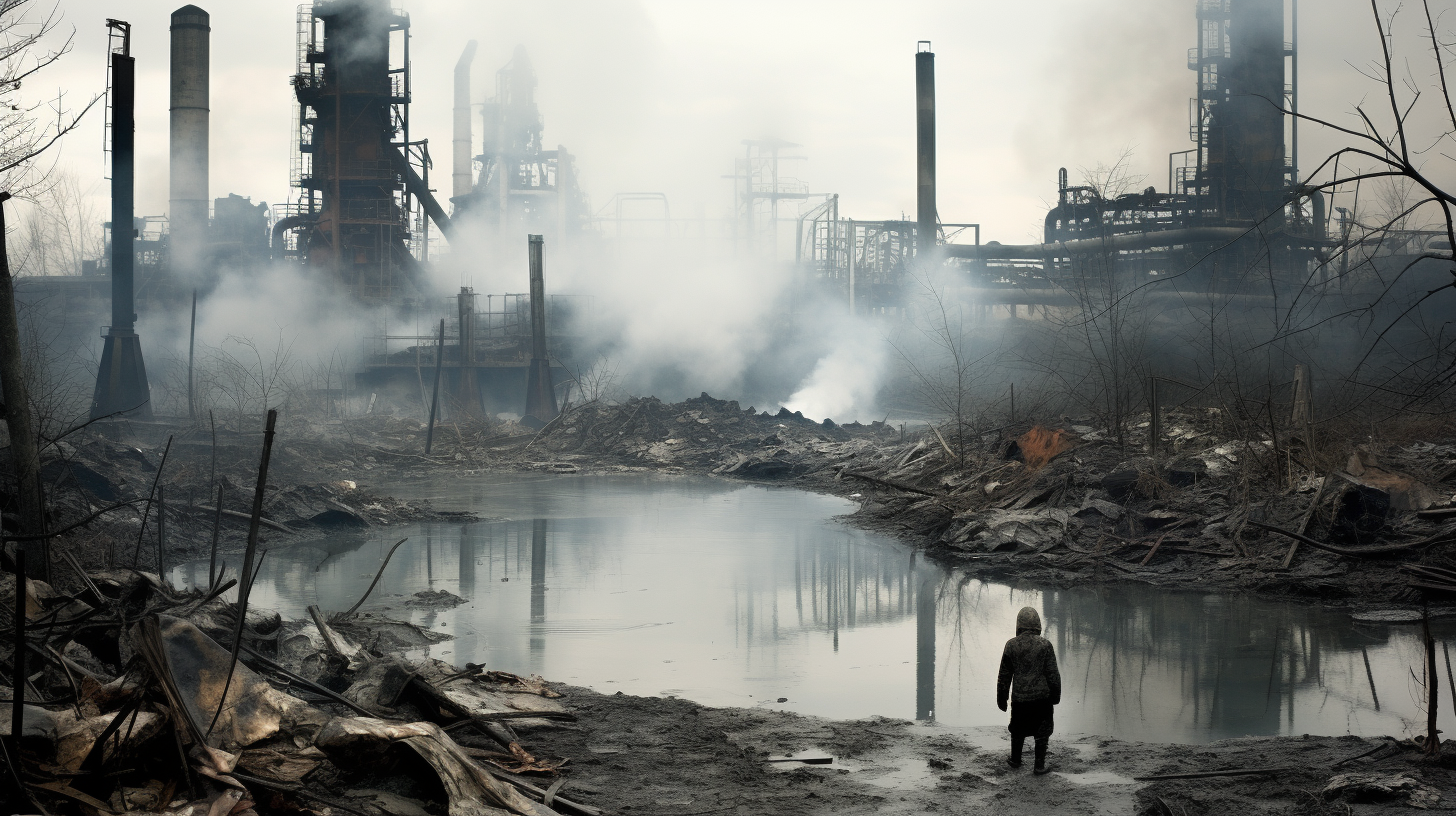In the shadow of a once teeming-with-life planet, where the wingbeats of birds and the rustle of verdant leaves are now silent, there exist enclaves of desperate survival – the world’s pollution sanctuaries. These Gray Havens are the final bastions against the relentless surge of the dying Earth’s noxious embrace. Here, within these domed cities and subterranean labyrinths, humanity endures, amidst air filters and artificial greenery, a life amidst ruins.
The Great Smog permanently erased the demarcating line between the outside world and these sanctuaries. No longer can we speak of escaping to nature, for what remains of it is ashen and toxic. The Air That Burns has been our reality for so long that the stories of our ancestors breathe like fantasy – a canopy of stars, a breeze that doesn’t sting the eyes, water without the film of chemical froth.
Yet within the confines of the Gray Havens, life thrives in bleak defiance. Here, ingenious adaptations and the relentless human spirit have conjunctively carved a reality. We’ve transformed from a species of open skies to dwellers of the dim, the claustrophobic, and the rarefied.
Let’s explore one such sanctuary, Neo-Eden, a place where every breath is recycled, every drop of water meticulously purified. Its domes stand amidst desolation like bubbles of a dream half-remembered. The residents, perpetually masked, navigate through isles of vertical farms and lab-grown meat factories, which have become the norm. The concept of ‘wild-caught’ is relegated to tales of horror – of dead zones and poisoned seas.
The Gray Havens are not just shelters but hubs of innovation. Here, rebellion is technological – the clean air rebels strive tirelessly. Splicing genes, code, and atoms, they chase the folly of Earth’s restoration, knowing well that their endeavours may be just grasping at straws in a hurricane. But still, they toil, amid skeptics and realists, amassing a lore all their own.
The implications for long-term survival in the Gray Havens are dire. As portrayed in ‘Clouded Futures: A World Without Forecast’, the absence of reliable environmental forecasts renders each day a gamble. Despite best efforts, the shifting patterns outside the sanctuaries sometimes breach their defenses. A rogue storm, an errant seismic shift, and the walls that keep death at bay can quiver and crack.
In Neo-Eden, the education thrust upon the young is one of pragmatism over philosophy; survival skills take precedence over the arts. Children are taught to repair air filters before they learn of Shakespeare, to recognize toxic gas leaks before they delve into mathematics. It is a curtailed childhood, shorn of dreams, yet full of determination.
In these cities, hope is a scarce commodity, traded in whispers and wistful thinking. And yet, at times, it flourishes in the strangest of places. Underground speakeasies where the dome’s filtered sunlight never reaches nurture it. It’s seen in art that replaces landscapes with schematics, in music that harmonizes with the hum of ventilation systems, in dance that mimics the frenetic desperation of survival.
And it’s found in the people themselves – those ‘survivors of circumstance’, who find beauty in the artificial sunsets, who cherish the camaraderie born of collective endurance. Their lives are a mosaic of the grim and the joyful, a symphony of muted hope.
Each breath taken in the Gray Havens is a testament to human resilience. We have made a world within a world, sanctuaries within a sanctuary. And as the Earth gasps around us, within these gray walls, life – somber, choked, yet unyielding – continues.
